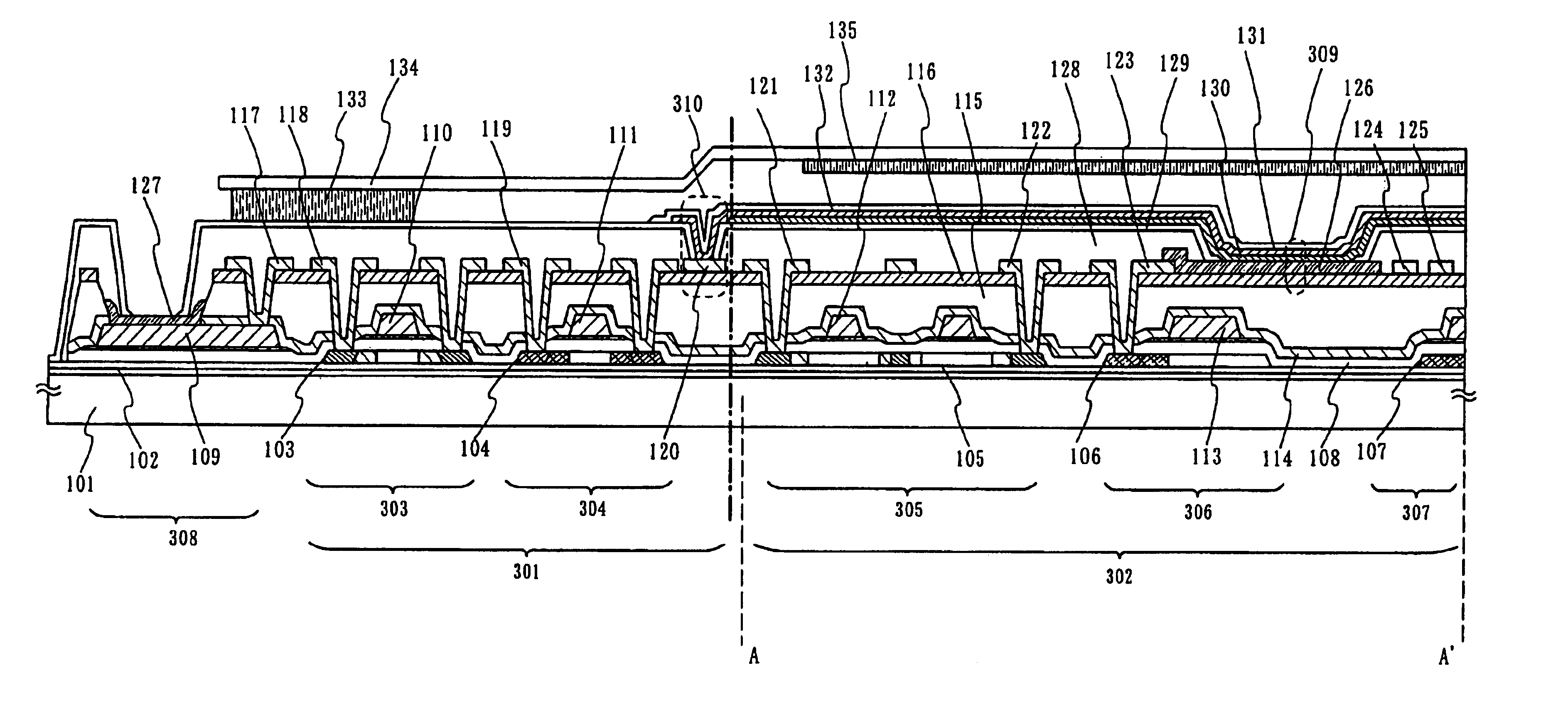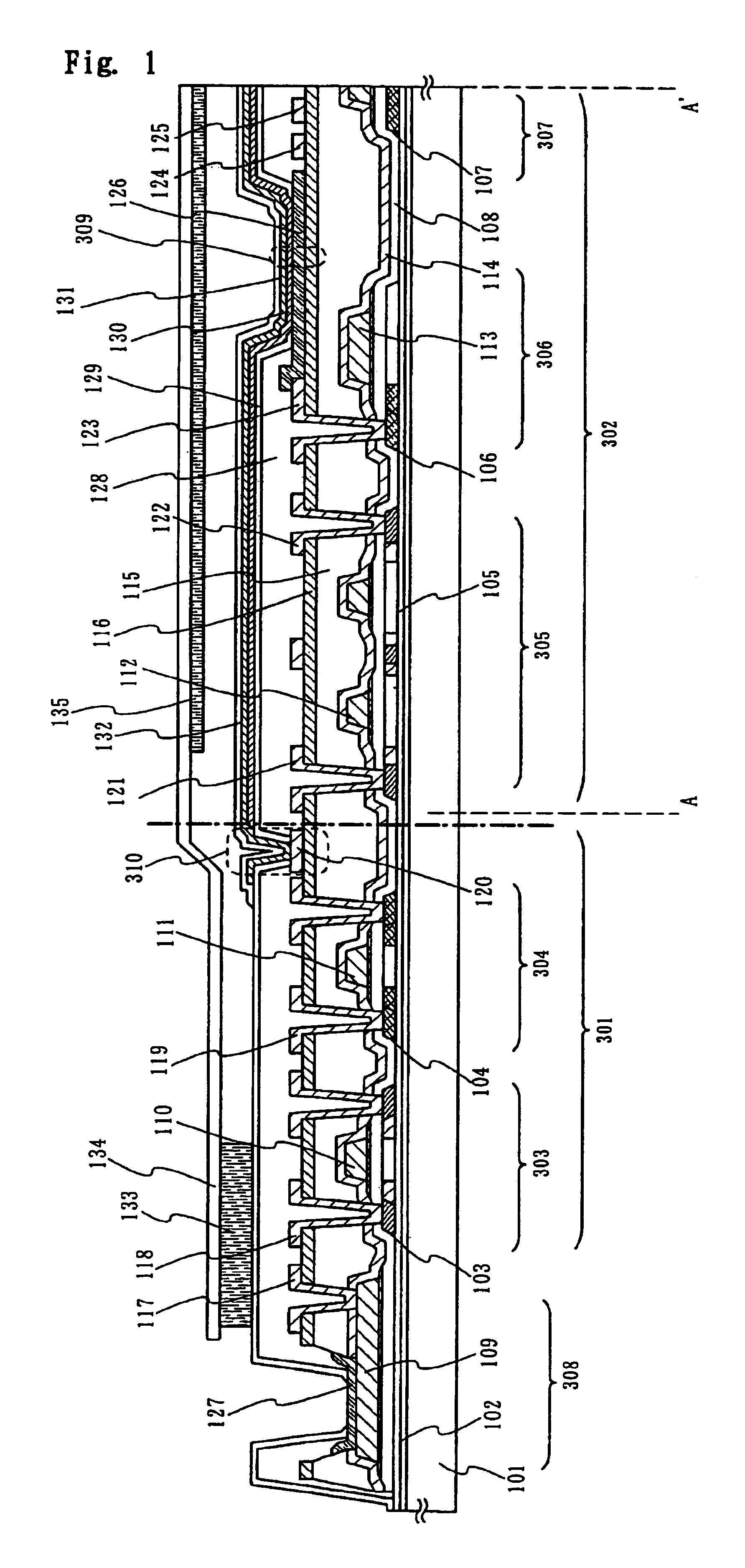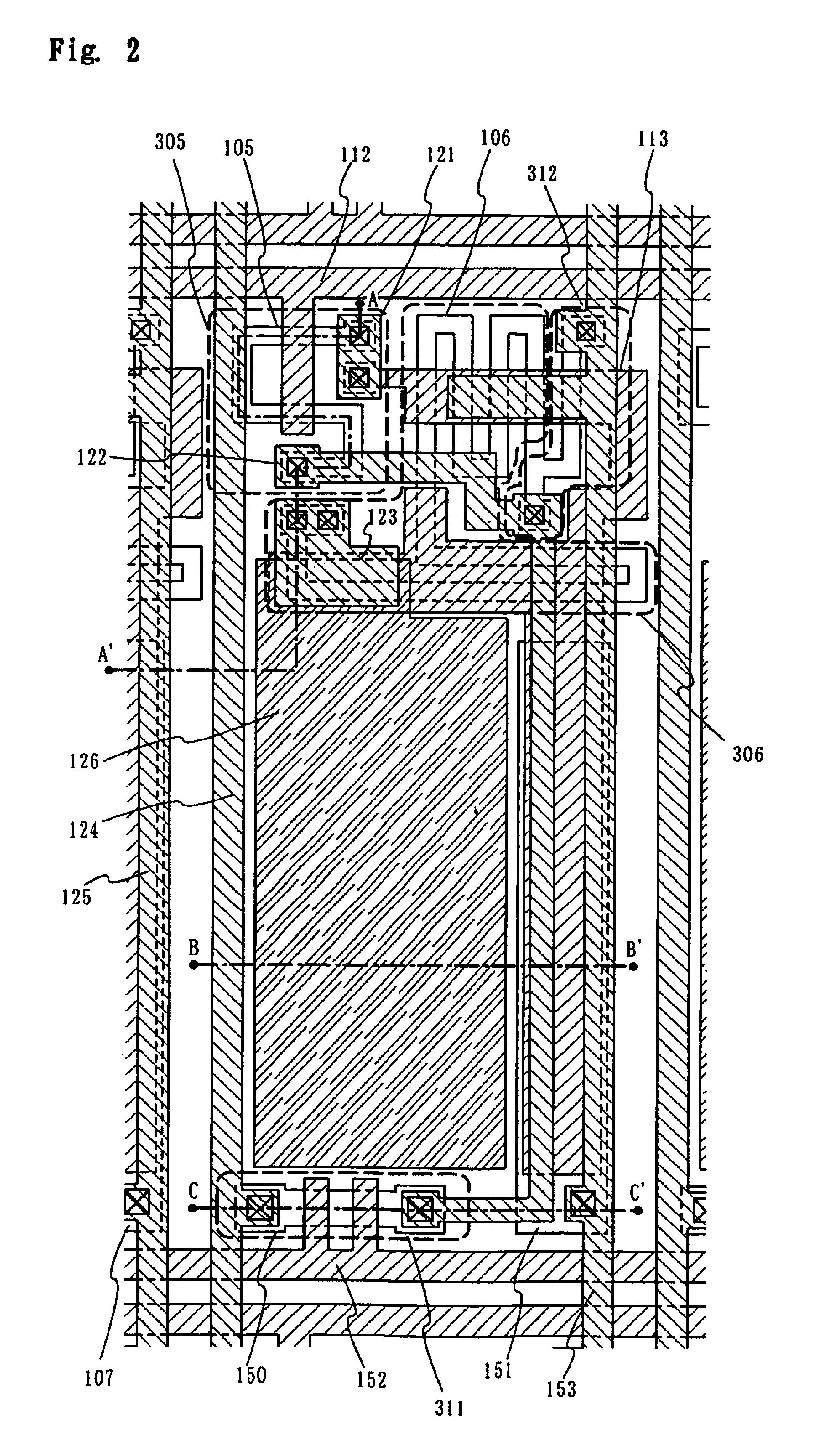Light emitting apparatus and method for manufacturing the same
a technology of light-emitting apparatus and manufacturing method, which is applied in the direction of thermoelectric devices, organic semiconductor devices, transistors, etc., can solve the problems of difficult to form determined patterns on the organic electro-luminescence layer, degraded alkali metal or alkali earth metal used for an electrode, and narrow angled field of view, so as to improve the reliability of the light-emitting apparatus
- Summary
- Abstract
- Description
- Claims
- Application Information
AI Technical Summary
Benefits of technology
Problems solved by technology
Method used
Image
Examples
embodiments
Embodiment 1
[0166]Next, the process of manufacturing the light emitting apparatus shown in FIG. 1 is described with reference to the figures.
[0167]In FIG. 8A, the substrate 101 maybe one of a glass substrate, a quartz substrate or a ceramic substrate. The substrate 101 may comprise a silicon substrate, a metal substrate or a stainless substrate with an insulation layer formed thereon. A plastic substrate having heat resistance bearable to the processing temperature of the embodiment is acceptable.
[0168]A first inorganic insulation layer 102 consisting of an insulation film such as a silicon oxide film, a silicon nitride film or a silicon oxynitride film (SiOxNy) is formed on the substrate 101. A typical example has a two-layer construction, in which the first silicon oxynitride film of 50 nm thickness is formed using SiH4, NH3 and N2O as reaction gases, and the second silicon oxynitride film of 100 nm thickness is formed on the first film, using SiH4 and N2O as reaction gases.
[0169]...
embodiment 2
[0192]This embodiment has a different construction than that of the embodiment 1 for the pixel section, as illustrated in FIGS. 31 and 32. In this embodiment, the processes from the beginning to the formation of the third inorganic insulation layer 116 wiring 123, and anode 126 are same as FIG. 1.
[0193]As shown in FIG. 31A, a second organic insulation layer 180 covering the end of the anode 126 is formed of a photosensitive, negative-type acrylic resin. Thus, the end where the second organic insulation layer 180 contacts with the anode 126 has a inclined surface having a curvature as shown in Figure, the shape of which can be expressed by at least two curvatures R1 and R2. The center of the R1 is located above the wiring, while that of the R2 is located below the wiring. This shape may vary slightly depending on the exposure, but the thickness of the film is 1.5 μm and the value for R1 and R2 is 0.2 to 2 μm. The inclined surface has continuously varying curvatures.
[0194]Then, along ...
embodiment 3
[0197]For the embodiments 1 to 2, there is no restriction on the construction of the organic compound layer in the light emitting element 309, so that, any known construction is applicable. The organic compound layer 130 has a light emitting layer, a positive holes injecting layer, an electrons injecting layer, a positive holes transferring layer and an electrons transferring layer, and may have a construction wherein these layers are laminated, or a construction wherein a part or all of the materials forming these layers are mixed. Particularly, the light emitting layer, the positive holes injecting layer, the electrons injecting layer, the positive holes transferring layer and the electrons transferring layer are included. A basic EL element has a construction wherein an anode, a light emitting layer, a cathode are laminated in this order. Other possible construction includes a construction wherein the layers are laminated in an order of an anode, a positive holes injection layer,...
PUM
 Login to View More
Login to View More Abstract
Description
Claims
Application Information
 Login to View More
Login to View More - R&D
- Intellectual Property
- Life Sciences
- Materials
- Tech Scout
- Unparalleled Data Quality
- Higher Quality Content
- 60% Fewer Hallucinations
Browse by: Latest US Patents, China's latest patents, Technical Efficacy Thesaurus, Application Domain, Technology Topic, Popular Technical Reports.
© 2025 PatSnap. All rights reserved.Legal|Privacy policy|Modern Slavery Act Transparency Statement|Sitemap|About US| Contact US: help@patsnap.com



